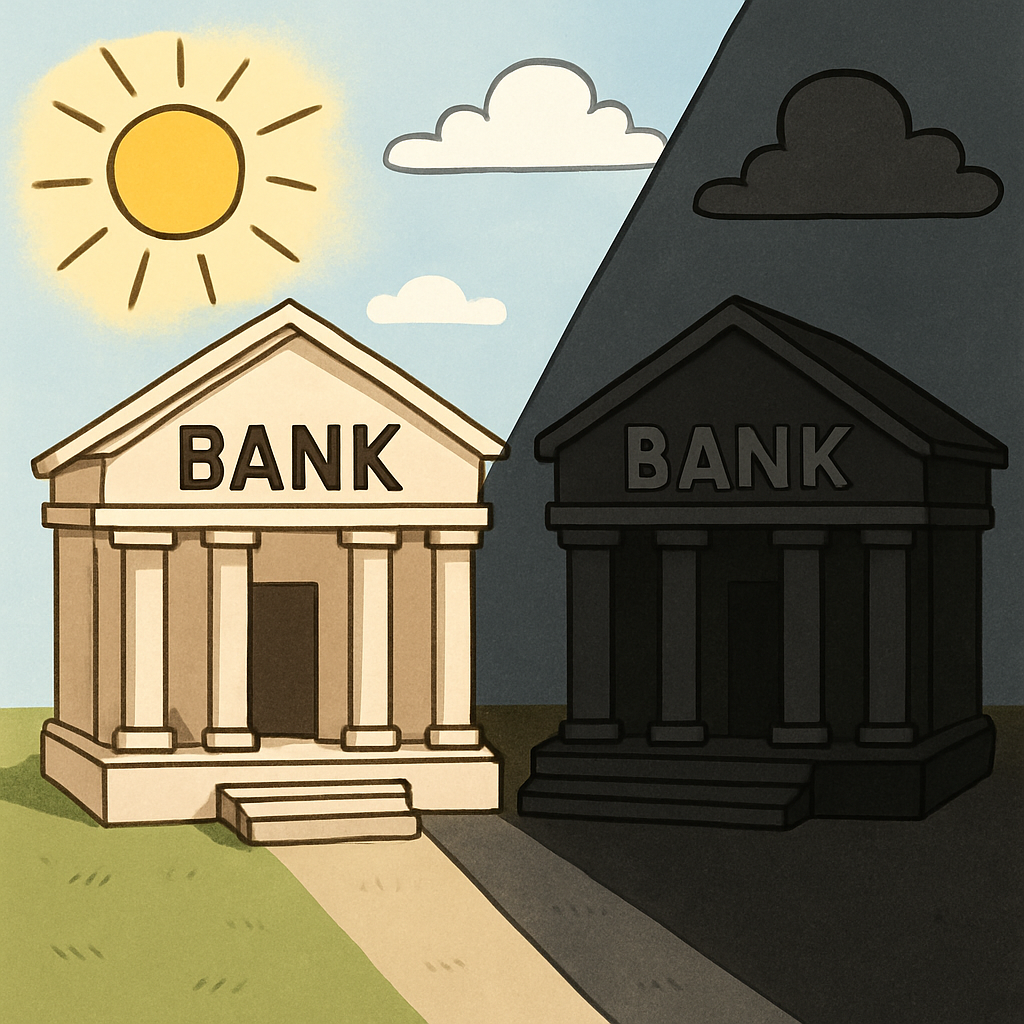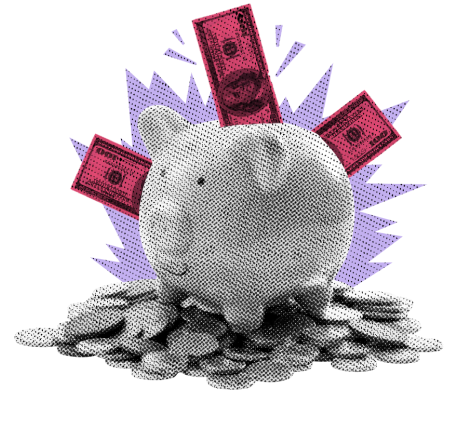
Two defaults don’t make a crisis, but they might mark the start of one.
KEY TAKEAWAYS
-
Outstanding consumer credit has expanded 2,381% in 50 years
-
Buy Now, Pay Later and fintech lending add hidden, unmeasured credit risk
-
Private credit funds have replaced banks in many high-risk loans
-
Recent defaults (Tricolor, First Brands) hint at cracks in the system
-
Regional banks (Zions, Western Alliance) show fraud-related vulnerabilities
MY HOT TAKES
-
Credit is the next real risk–not inflation or tariffs
-
Private credit’s opacity mirrors pre-2008 behavior
-
BNPL lending is today’s version of subprime–with better branding
-
Markets may be underpricing credit risk amid AI-driven optimism
-
I’m bullish–but with a wary eye on leverage and liquidity
-
You can quote me: “Credit risk hasn’t disappeared–it’s just hiding in the shadows.”
Lenders behaving badly? Last night, I was privileged to be in great company! I sat down with a few of my industry colleagues and Bloomberg’s top economists who, my long-time followers know, that I am a BIG fan of. It didn’t take long for me to find a fellow bullish economist, and the discussions wound on. We compared our theses which included–of course–the productivity benefits of AI, the massive AI capex spend (which obviously can’t last forever), the resilient consumer 🎆, easing monetary policy, stimulative fiscal policy, and the wealth effect, to name just a few. I have written a lot about all those drivers lately. The prognosis for continued, solid growth runs through 2026, but it is difficult to say with conviction what happens beyond. Excuse me for not taking shots in the dark, folks; predicting market and economic performance 18 months hence in this brave new world is a waste of good ink. So, please just be satisfied with 2025 and 2026–we will get to 2027 as soon as we can. 😉
Long before I solved my first net present value of future cash flows equation (a finance thing 😉), I was calculating the marginal propensity to produce, plotting IS-LM curves, and wrestling with econometric models. I called myself an economist long before I adopted the finance-guy moniker. In fairness, I would call myself an applied economist. It was nice to be surrounded by my kind last night–in fact, refreshing even.
Harry S. Truman famously quipped, “Give me a one-handed economist! All my economists say, ‘On the one hand, on the other hand.’” If you have followed me long enough, you know that even when I have my finance hat on, I stay true to my multi-handed, economist roots, always attempting to give you both sides of the story to ensure that you make informed decisions.
As we chatted about our bullish sentiment, it didn’t take long for us to get to that “other” hand. We quickly got to the footnotes in which we would qualify our theses. We started to discuss our… well, fear might be a little strong, perhaps… trepidation that there may be another shoe to drop, and it had nothing to do with inflation or tariffs, or geopolitics. No. We were talking about credit. Is the credit market healthy? We all know that Americans are obsessed with credit, which enables consumers to consume beyond their means. Check out this chart and keep reading.

Longtime followers, you have seen this chart many times. It is a plot of total outstanding consumer credit (white line). In case you can’t read the annotations, total outstanding consumer debt has grown by 2,381% in 50 years! The last 25 years has seen a 214% expansion, and the last 10 years has the debt pile climbing by some 48%. Stepping back you will notice that there are minor ebbs and flows, but the trend is up, up, up, with a relatively stable trajectory since the late 1990s. I am sure that this doesn’t surprise you.
This is nerve wracking enough, but what is really interesting is that it does not include all consumer borrowing. You see, consumer lending is no longer just the domain of banks and credit cards. Companies like Klarna operate in what regulators politely call the “non-bank financial intermediation” space–essentially, they lend without being banks. It’s part of the broader fintech ecosystem that extends short-term credit directly to consumers through Buy Now, Pay Later (BNPL) plans. These aren’t deposits or traditional loans, but functionally, they’re still debt–just dressed up in app-based convenience and clever branding. From a technical standpoint, it’s unsecured consumer installment credit, but from a market perspective, it’s shadow banking with better UX. “UX,” by the way, is cool-person talk for “user experience,” which I used to imply that it makes borrowing effortless–maybe too effortless. Anyway, guess what? No one, not even the Fed, knows how much of that is outstanding. Further, because they are in the “shadows,” we have very little intelligence on the quality of that pile of credit and, therefore, have no clue how well those loans will do under stress. Under the stress of… say, a rise in unemployment.
Ok, so there was that “other hand,” that we vetted over cocktails. As we headed to our table, the conversation went to institutional lending. The first thing that comes to mind is bank lending, right? That highly regulated and well documented area of lending is well understood. It certainly comes with risks, but those risks are well-understood. But bank lending–AKA balance sheet lending–is not the only game in town any more. Now we have private lending in the mix.
Private lending has exploded in recent years, driven by the same hunger for yield that inflated risk assets across the globe. Trillions of dollars have poured into funds managed by private credit giants like Apollo, Ares, Blackstone, KKR, and enough Greek gods to fill Mount Olympus. ⚡🤣 These firms lend where banks won’t, often to companies too small, too risky, or too complicated for traditional underwriting. On the surface, that sounds like capitalism doing its job by allocating capital to productive uses. But underneath that marble facade of sophistication lies a softer underbelly of credit risk that’s not so easy to track.
Unlike traditional banks, private lenders don’t take deposits or face the same capital requirements, disclosure rules, or regulatory oversight. Their loans live in the shadows, similar to the non-bank financial intermediation companies I discussed above. 🙃 These institutional loans are negotiated privately, priced quietly, and marked internally. In a bull market, it all looks brilliant. Returns are high (at least they appear to, but some academics disagree), defaults are low, and investors pat themselves on the back for “diversifying away from traditional risk.” But when liquidity tightens or the economy slows, these structures can creak–and possibly even snap.
Case in point: Tricolor Holdings and First Brands Group, two recent defaults that should have been small blips but have set off ripples across the private lending ecosystem. Jamie Dimon called them cockroaches earlier this week and warned that there may be more. 🪳
Tricolor, a Dallas-based used car lender, was once held up as a model of socially conscious finance: lending to borrowers with limited credit histories, many of them immigrants, using AI-backed underwriting models. Noble idea. But noble ideas don’t pay interest. When delinquencies started ticking up and financing costs rose, the structure buckled. Tricolor defaulted on nearly $1 billion in asset-backed securities earlier this month.
Then came First Brands, the company behind names like FRAM filters and Prestone antifreeze. Their private lenders, many of them household institutional names (Jefferies, UBS, and BofA), were forced into negotiations after the company breached its loan covenants. These aren’t fly-by-night operations. No, these are companies with real cash flow, real products, and real institutional backing. And yet, they stumbled.

Now, to be clear, two defaults don’t make a crisis. But they serve as early tremors that suggest a shift beneath the surface. As capital floods into private credit funds hungry for deployment, underwriting standards can soften. Deals get done faster. Documentation gets lighter. Risk gets sliced, packaged, and sold to investors chasing double-digit returns in a world of single-digit Treasuries. Sound familiar?
This is where I start to get… let’s call it… er, uneasy. Remember, we are not talking about retail consumers using BNPL apps anymore–we are talking about institutions, pensions, and endowments funding opaque pools of leveraged loans that are not publicly traded, not stress-tested, and not fully understood. When the next downturn hits, and there is a respectable chance that it will, the question won’t just be who loaned, but how they loaned, to whom, and with what protections.
Meanwhile, back in the regulated banking world, the headlines weren’t great either. Zions and Western Alliance both found themselves in the spotlight yesterday–and not in a good way. Shares of the two regional banks tumbled after each disclosed that they’d been victims of loan fraud tied to funds investing in distressed commercial mortgages. 😟 Zions said it would take a $50 million charge-off on a fraudulent loan originated through its California Bank & Trust unit, while Western Alliance fell under similar scrutiny after reporting related credit issues.
Zions dropped roughly 13%, Western Alliance nearly 11%, as investors digested the possibility that what looked like isolated credit events might actually be early cracks forming in the broader lending landscape.

It’s not lost on markets that these disclosures arrived just as other credit stories like the Tricolor Holdings and First Brands Group defaults, are still being digested by the system. The biggest banks can absorb a few bad loans without blinking (JPMorgan was hit by Tricolor), but for regionals already battling higher deposit costs and thinner margins, fraud-related losses–or any credit losses, for that matter–cut closer to the bone.
Let's be clear, when we zoom out, there aren’t any signs of imminent collapse. The consumer remains resilient. Employment remains strong. Capital markets are open. There is liquidity in the system. But it seems quite clear that risk is migrating out of the banks and into private structures, out of the light and into the shadows. It’s like a frog in boiling water, the heat rises so slowly you barely notice until it’s far too late to jump out.
This is why it’s so important to pay attention to credit, even when it’s not flashing red. Because credit is the connective tissue of the economy. When it contracts, everything else–consumption, investment, hiring–tightens with it. If consumers can’t borrow, they stop buying. If companies can’t borrow, they stop building. And if investors stop trusting, the whole system slows down.
That’s why ultimately, I along with my newfound economist-friends settled on: cautiously positive. The macro setup still looks favorable: disinflationary trends, improving productivity, AI-driven investment cycles, and a Fed poised to ease. But under that optimism lies the “other hand” Harry Truman warned about–the one that still worries about credit quality, overleverage, and human nature’s uncanny ability to forget pain shockingly fast.
So yes, I’m still bullish. But at the end of the day, I’m still a multi-handed economist, and one of those hands is gripping the credit data a little tighter than usual. Lenders behaving badly? Maybe not yet. But I’d keep an eye on those hands. 👀🤲
YESTERDAY’S MARKETS
Stocks stumbled yesterday after some bank earnings announcements reopened fresh wounds–not nearly healed–from recent auto industry defaults. Bond yields pulled back, and our old-new friend gold managed to hit another fresh high in classic risk off move.

NEXT UP
-
Housing Starts (Sept) may have risen by 1.0% after falling by -8.5% in August.
-
Building Permits (Sept) probably climbed by 1.0% after slipping -2.3% in the prior period.
-
St. Louis Fed President and known hawk will speak today.
-
Next week we will get lots of earnings, more housing numbers, and we may get delayed CPI numbers! Check back in on Monday to download calendars, so you too can be ready to tackle the markets just like the winner you were born to be.
.png)

